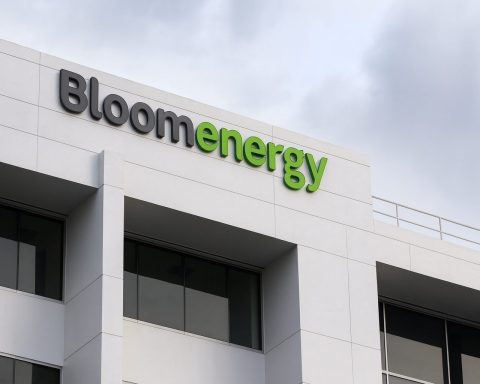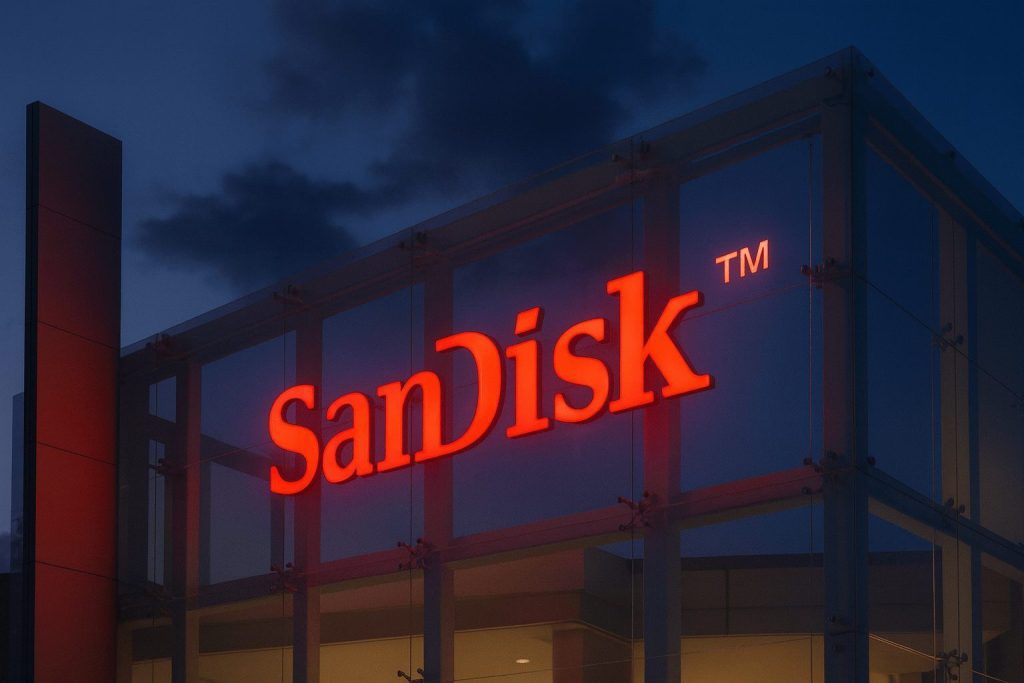UnitedHealth Group Incorporated (NYSE: UNH) shares are edging higher today as investors digest fresh policy headlines out of Washington and a wave of new analysis explaining how the stock managed to lose roughly half its value over the past year.
By early afternoon, UNH is trading around $322 per share, up about 0.6% on the day, with an intraday range near $318–$329 and a market value just under $292 billion. [1] That’s still almost 50% below its 52‑week high of about $623, underscoring how severe 2025’s selloff has been. [2]
At the same time, a new Reuters report that the Trump administration may extend Affordable Care Act (ACA) premium subsidies is lifting health insurers broadly, while Forbes/Trefis, The Motley Fool, and multiple institutional ownership filings are reshaping the narrative around whether UNH is now a broken giant or a bruised blue chip in recovery. [3]
Below is a breakdown of everything that matters for UnitedHealth Group stock today, November 24, 2025.
UNH stock price today: stabilising after a brutal year
According to StockAnalysis data, UNH is trading near $322, up modestly on Monday, with: [4]
- Market cap: ≈ $292 billion
- Trailing P/E: ~16.8
- Forward P/E: ~19.2
- Dividend:$8.84 per share annually (yield ≈ 2.7%)
- 52‑week range:$234.60 – $622.83
Analysts tracked by StockAnalysis give UNH an overall “Buy” rating with a 12‑month average price target around $408, implying roughly 25–30% upside from current levels. [5]
Despite today’s small bounce, UNH is still down roughly a third in 2025, based on early‑November commentary that highlighted shares being about 35% lower year‑to‑date. [6] The damage traces back to a string of earnings shocks, a spike in medical costs within Medicare Advantage, and ongoing fallout from the Change Healthcare cyberattack.
ACA subsidy extension talk gives UNH a policy tailwind
The biggest fresh macro driver for health insurers today is policy, not earnings.
A new Reuters report says U.S. health insurers rallied after a media story that the White House is preparing a framework to extend ACA premium subsidies (Obamacare tax credits) for two years and introduce new eligibility limits. [7]
- Centene jumped about 7%
- Molina gained around 4%
- Elevance rose more than 2%
An Oppenheimer analyst described the move as essentially a “better than feared” outcome for the sector, because insurers had been bracing for subsidy expiry and a 2026 enrollment shock. [8]
UnitedHealth isn’t singled out by name in the text, but it is a major player in ACA‑linked and individual markets. A two‑year subsidy extension would:
- Reduce the risk of a sudden premium spike for exchange enrollees in 2026
- Support enrollment stability in UNH’s individual and exchange books
- Lower the odds of a fresh wave of bad debt and churn that could complicate its ongoing turnaround
Today’s roughly 0.6% rise in UNH tracks this broader “relief rally” even though the stock remains far from reclaiming earlier losses. [9]
Why UNH lost half its value: the Medical Care Ratio (MCR) problem
A widely read Forbes/Trefis piece published today asks bluntly: “Why Did UNH Stock Lose Half Its Value And What Comes Next?” It points out that UnitedHealth’s share price collapsed from over $600 to around $310–$320, nearly a 50% drawdown, and argues that this is not ordinary market volatility. [10]
The heart of the thesis:
- The Medical Care Ratio (MCR) — the percentage of premiums spent on patient care — surged sharply
- Higher MCR compresses margins in UnitedHealthcare’s insurance arm
- Even Optum, previously seen as the “profit engine,” has struggled to offset the damage [11]
The backdrop:
- Q1 2025: UnitedHealth shocked markets by slashing its 2025 earnings outlook as Medicare Advantage members used more care than expected. Reuters and others reported that adjusted EPS guidance fell from around $29.50–$30.00 to $26.00–$26.50, wiping out more than $3 billion in expected profits and sending the stock down over 20% in a single day. [12]
- Q2 2025: Another earnings miss followed. One review noted adjusted EPS of $4.08 vs. $4.59 expected, with rising medical costs again blamed, pushing shares down more than 16% in the days after the release. [13]
By August, Trefis was describing the situation as an MCR‑driven “fundamental breakdown”, not a temporary hiccup — a message reiterated in today’s Forbes article. [14]
Q3 2025 results: a “beat and raise” amid still‑thin margins
The tone turned more constructive in late October.
In its Q3 2025 earnings release, UnitedHealth reported: [15]
- Revenue: $113.2 billion (+12% year‑over‑year)
- GAAP EPS:$2.59
- Adjusted EPS:$2.92, slightly above consensus
- Medical Care Ratio:89.9%, in line with management’s revised expectations
- UnitedHealthcare revenue: up 16% to $87.1 billion, serving 50.1 million U.S. consumers
- Optum revenue: up 8% to $69.2 billion, led by Optum Rx
Management simultaneously raised full‑year 2025 guidance to at least $14.90 in GAAP EPS and $16.25 in adjusted EPS, signaling that they see cost trends stabilising and pricing adjustments taking hold. [16]
The Associated Press framed the quarter as a step in a slow recovery: profits were still down about 61% year‑over‑year, but the company finally beat expectations, reset pricing on underperforming books, and said it expects growth in 2026 with further acceleration into 2027. [17]
In other words, Q3 looked more like a “reset and repair” quarter than a full turnaround — but it was a meaningful change in tone after two consecutive shocks.
Medicare Advantage retrenchment: one million seniors to lose UNH plans
One of the most controversial storylines hanging over UNH shares this month is its aggressive Medicare Advantage (MA) retrenchment.
A November 19 MarketWatch opinion piece reports that UnitedHealth plans to drop about 1 million seniors from its Medicare Advantage plans as it works to restore margins. At a UBS healthcare conference, CFO Wayne DeVeydt reportedly described the changes as helping the company regain the “swagger” it once had — a phrase that drew heavy criticism given the human impact. [18]
Key points from that coverage and related reporting:
- UnitedHealth plans to exit unprofitable Medicare Advantage and ACA products
- ACA plan premiums are expected to rise by roughly 26%, in line with other insurers, as companies reprice to reflect higher utilisation and funding cuts
- Critics argue the company is prioritising profitability over patient care, particularly as one million older Americans are being pushed to find new coverage
A separate Reuters piece earlier this fall noted that UnitedHealth will stop offering Medicare Advantage plans in 109 U.S. counties in 2026, affecting about 180,000 members, as it balances higher costs against reimbursement pressure. [19]
For investors, the MA downsizing is a double‑edged sword:
- Bullish angle: Exiting low‑margin geographies and repricing plans should help bring the MCR back under control and support earnings recovery through 2027. [20]
- Bearish angle: The move risks political backlash and reputational damage, especially as senators and commentators call for potential structural remedies, including the idea of breaking up UnitedHealth’s integrated insurance and Optum businesses. [21]
Change Healthcare cyberattack: costs, lawsuits and regulatory scrutiny
The Change Healthcare cyberattack, first disclosed in February 2024, continues to cast a long shadow over UnitedHealth’s investment case.
Key facts from recent reporting and regulatory filings:
- Hackers linked to the BlackCat/ALPHV ransomware group breached Change Healthcare systems using compromised credentials on a server that lacked multi‑factor authentication. [22]
- The breach is now believed to have exposed sensitive data on around 190 million individuals, making it the largest healthcare data breach on record. [23]
- By late 2024, UnitedHealth estimated $2.45 billion in direct costs related to the incident, including remediation and support programs. [24]
To keep providers afloat during the outage, UnitedHealth (via Optum) extended about $9 billion in no‑interest loans; roughly $3.2 billion had been repaid as of this year. But HIPAA Journal reports that some practices are now receiving aggressive repayment demands or seeing claims withheld, prompting the American Medical Association to urge a more flexible approach. [25]
Legal and regulatory overhangs include:
- A consolidated federal multidistrict litigation (MDL) in Minnesota covering dozens of lawsuits filed by patients and providers.
- A Nebraska Attorney General lawsuit accusing Change Healthcare, Optum, and UnitedHealth of failing to maintain basic cybersecurity protections and of delaying notification to affected residents. [26]
- Ongoing investigations by federal regulators into possible HIPAA Security Rule violations, with policymakers pushing for stronger baseline cyber requirements in healthcare. [27]
While these issues are partly backward‑looking, the ultimate settlement costs and regulatory remedies remain open questions, adding another layer of uncertainty for long‑term UNH holders.
DOJ investigations: fraud and antitrust risks
UnitedHealth’s regulatory challenges are not limited to cybersecurity.
Earlier this year, the U.S. Department of Justice opened a civil fraud investigation into UnitedHealthcare’s Medicare Advantage billing practices, examining whether diagnoses were used to inflate payments from the federal government. Reuters and The Guardian reported that the probe triggered a double‑digit drop in UNH shares and comes on top of an ongoing antitrust investigation into UnitedHealth’s vertical integration strategy. [28]
Combined with calls from lawmakers to scrutinise the company’s scale — particularly its ownership of a vast physician network through Optum — this investigation is one of the key policy risks investors must price in when evaluating the stock.
Institutional investors are repositioning around UNH
Today’s tape also reflects shifting institutional positioning in UnitedHealth Group.
On November 24, MarketBeat highlighted several new 13F filings:
- Waterloo Capital L.P. cut its UNH stake by about 28% in Q2, holding 5,529 shares worth roughly $1.7 million after selling 2,196 shares. [29]
- Vestor Capital LLC slashed its position by 96.5%, ending the quarter with 562 shares after selling 15,523 shares; its remaining stake was valued around $175,000. [30]
But the exodus isn’t one‑way. Over the weekend, other filings showed major buying on weakness:
- Soundwatch Capital LLC boosted its UNH holdings by nearly 19,500%, purchasing 334,956 shares to reach 336,674 shares worth about $105 million, making UNH a top‑15 holding. [31]
- Centric Wealth Management increased its stake by 1,344% to 53,109 shares, turning UnitedHealth into its third‑largest position, about 3.9% of its portfolio. [32]
MarketBeat’s aggregation shows that institutional ownership sits near 88%, with some managers de‑risking after the crash while others treat UNH as a contrarian value opportunity. [33]
Governance and board changes: Scott Gottlieb joins
Amid the turmoil, UnitedHealth has been reshaping its leadership profile.
Last week, the company announced that Dr. Scott Gottlieb, former FDA commissioner and Medicare adviser, joined its board of directors. Forbes, Reuters, and Business Wire all note that his policy and regulatory expertise could be particularly valuable as the firm navigates Medicare Advantage scrutiny and antitrust questions. [34]
Separately, Steve Hemsley returned as CEO earlier this year, pledging at the June shareholder meeting to “earn back shareholder trust” after UnitedHealth’s first earnings miss since 2008 and the suspension of its earnings outlook. He highlighted plans to adjust pricing and plan design and to review practices across UnitedHealthcare and Optum, including the pharmacy benefit manager Optum Rx. [35]
What analysts and commentators are saying today
The Motley Fool: risk, but bright spots
A fresh Motley Fool article titled “Should You Buy Shares of UnitedHealth in November?” notes that UNH is down about 35% this year, underscoring the damage, but also points to several bright spots: [36]
- Q3 2025 beat expectations and came with a guidance raise
- The dividend yield near 2.7–2.8% is relatively attractive for a defensive healthcare giant
- High‑profile “super investors” like Berkshire Hathaway and, earlier in the year, Michael Burry have taken or discussed positions in UNH, suggesting some long‑term confidence in the franchise despite the bad year. [37]
The Fool’s bottom line: UNH is not a risk‑free bargain, but investors with patience and tolerance for regulatory volatility may find the risk‑reward compelling.
Forbes/Trefis: MCR‑driven damage but potential upside
Today’s Forbes/Trefis analysis pins the stock’s 50% collapse squarely on the MCR spike and squeezed margins, while arguing that if UnitedHealth can: [38]
- Reprice underperforming plans
- Trim or exit unprofitable MA and ACA geographies
- Restore profitability in Optum
…then UNH could support materially higher earnings and, in turn, a higher stock price over the medium term. The message is cautious but constructively skewed: the damage is real, but so is the underlying franchise strength.
Other research: recovery vs. value trap
Recent Seeking Alpha and sell‑side commentary is split: [39]
- Bullish pieces like “UnitedHealth’s Rally Still Has Legs, Further Margin Recovery Through 2027” and “Buy Before the Buybacks Resume” focus on the company’s scale, pricing power and the idea that once leverage and litigation risks settle, UNH can return cash to shareholders more aggressively.
- More cautious notes such as “UNH – 3 Reasons Not To Buy After ‘Beat & Raise’” and “Risk‑Reward Profile Signals Time To Hold, Not Buy” stress that medical cost visibility, regulatory probes, and MA downsizing could keep valuation compressed for longer.
Net‑net, Wall Street’s published ratings lean “Moderate/Strong Buy”, but the narrative is far from unanimous. [40]
Key things for UNH investors to watch heading into 2026
Looking beyond today’s modest uptick, here are the main variables likely to drive UnitedHealth Group stock over the next 12–18 months:
- Medical Care Ratio (MCR) trend
- Does MCR continue to normalise in 2026 as repricing and plan exits take effect, or do elevated utilisation and policy changes keep pressure on margins? [41]
- 2026 guidance at January outlook day
- Management has flagged plans to outline a formal 2026 forecast in January; the credibility of that guidance will be critical after this year’s multiple cuts and suspension. [42]
- Execution on Medicare Advantage and ACA restructuring
- Investors will watch how the 1 million MA member reduction and ACA premium increases play through the P&L and whether disenrolled seniors migrate to other UNH products or competitors. [43]
- ACA subsidy decisions in Washington
- The market is currently reacting positively to the idea of a two‑year ACA subsidy extension; the final details — and whether Congress ultimately codifies the policy — will matter for UNH’s 2026 exchange and individual business assumptions. [44]
- Legal and regulatory outcomes
- DOJ Medicare Advantage billing investigation, antitrust scrutiny of vertical integration, Change Healthcare MDL, and state AG suits are all unresolved and could affect both earnings and business strategy. [45]
- Cybersecurity and Change Healthcare remediation
- Regulators continue to emphasise tougher baseline cyber requirements after an estimated $2.45 billion in breach costs and data exposure affecting close to half the U.S. population. Investors will want evidence that risk controls have been materially strengthened. [46]
- Capital allocation: dividend vs. buybacks
- The dividend appears secure and currently yields roughly 2.7–2.8%, but share repurchases remain constrained by litigation, leverage, and a need to rebuild flexibility. A credible plan to resume buybacks is a potential upside catalyst. [47]
Bottom line: is UNH stock a recovery play or a value trap?
On November 24, 2025, UnitedHealth Group stock sits at an uncomfortable crossroads:
- Valuation & income: UNH trades at a mid‑teens trailing P/E with a near‑3% dividend yield and consensus price targets about 25–30% above current levels. [48]
- Business quality: It remains the largest U.S. health insurer, with enormous scale across insurance, pharmacy benefits, and care delivery via Optum. [49]
- Risks: Elevated medical costs, aggressive Medicare Advantage cuts, cyber‑related legal exposure, and DOJ investigations mean the company is operating under more scrutiny than at any point in recent memory. [50]
For long‑term investors, UNH increasingly looks like a high‑quality but controversial turnaround story:
- If management truly has MCR under control, the MA and ACA portfolios correctly repriced, and legal risks contained, today’s price could prove to be a deeply discounted entry point.
- If costs or regulation again surprise to the downside, the stock could remain a value trap, with the 2025 drawdown turning into a prolonged period of subpar returns.
As always, this article is informational only and not financial advice. Anyone considering UNH should evaluate their own risk tolerance, time horizon and portfolio needs, and, ideally, consult a qualified financial adviser before making investment decisions.
References
1. stockanalysis.com, 2. stockanalysis.com, 3. www.reuters.com, 4. stockanalysis.com, 5. stockanalysis.com, 6. finviz.com, 7. www.reuters.com, 8. www.reuters.com, 9. www.reuters.com, 10. www.forbes.com, 11. www.trefis.com, 12. www.reuters.com, 13. leverageshares.com, 14. www.trefis.com, 15. www.unitedhealthgroup.com, 16. www.unitedhealthgroup.com, 17. apnews.com, 18. www.marketwatch.com, 19. www.reuters.com, 20. seekingalpha.com, 21. www.marketwatch.com, 22. www.digitalhealthnews.com, 23. www.hipaajournal.com, 24. www.digitalhealthnews.com, 25. www.hipaajournal.com, 26. www.hipaajournal.com, 27. www.hipaajournal.com, 28. www.theguardian.com, 29. www.marketbeat.com, 30. www.marketbeat.com, 31. www.marketbeat.com, 32. www.marketbeat.com, 33. www.marketbeat.com, 34. stockanalysis.com, 35. www.reuters.com, 36. finance.yahoo.com, 37. stockanalysis.com, 38. www.forbes.com, 39. seekingalpha.com, 40. www.marketbeat.com, 41. apnews.com, 42. apnews.com, 43. www.marketwatch.com, 44. www.reuters.com, 45. www.theguardian.com, 46. www.digitalhealthnews.com, 47. stockanalysis.com, 48. stockanalysis.com, 49. stockanalysis.com, 50. www.ft.com








